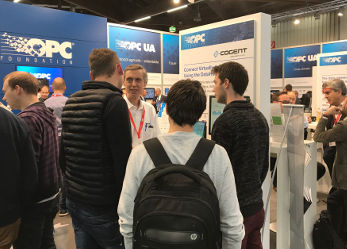Developing DHTP, the Ideal Protocol for IIoT
Ever since the concept of the Industrial IoT (IIoT) became popular, people have been trying to find the ideal protocol for it. After all, IIoT is something new. As the “Internet of Things,” it clearly involves data travelling across the Internet. But because it is also “Industrial”, it requires more than the common Internet protocols like FTP or HTTP to do the job. The best choice for an IIoT protocol is one that has been designed from the ground up to fulfill both industrial and Internet requirements.
Here at Skkynet we use such a protocol every day—DHTP (DataHub Transfer Protocol). From its inception over 20 years ago, DataHub technology involved connecting disparate systems in real time over a network and the Internet. It all started back in the ’90s with a product called Cascade Connect that exchanged data between programs running on a QNX real-time operating system, and the InTouch HMI running in Windows. Cascade Connect used two connectors, precursors of DataHub, one running in QNX and the other in Windows. Each of these connected to programs running on their respective operating systems using standard industrial protocols, and they also connected to each other using TCP over a network. The protocol they used to connect over TCP way back then has evolved into what we now call DHTP.
An Open Protocol
DHTP was made open from the start, with a published Cogent API. Each subsequent Cogent product, such as Cascade DataHub, the Gamma scripting language, Cascade Historian, and so on were accessible through the Cogent API. As the DataHub product evolved to become the OPC DataHub and then the Cogent DataHub, more commands were added, and the API was made available in Windows. Today DHTP consists of the DataHub API and DataHub Command Set.
Meeting the Needs
Each step of this evolutionary process took place within an industrial context, in response to the needs of specific projects. As our customers demanded more robust and secure data communication over TCP, we improved DHTP capabilities by adding SSL and other features. Nowhere is that more obvious than the success of the Cogent DataHub for OPC tunnelling applications. The DataHub DA Tunneller and DataHub UA Tunneller are unrivalled for their ability to connect OPC servers and clients across a network or the Internet.
Cloud and Embedded
As one of the first companies to recognize the value of industrial communications via the cloud, Skkynet enhanced DHTP with WebSocket capability for DataHub-to-SkkyHub connectivity. DHTP’s unique, patented ability to support secure, outbound connections from industrial systems for bidirectional communication without opening any firewall ports is key to Skkynet’s secure-by-design architecture. The introduction of the ETK for embedded systems a few years later completed the picture. DHTP is now the standard protocol used by DataHub, SkkyHub, and the ETK, the three core components of Skkynet’s IIoT products and services.
In our next blog we will explain in more detail why DHTP is the ideal protocol for the IIoT. We will provide an overview of the criteria for effective IIoT data communications, and show how DHTP meets all of them. As you learn more about DHTP, keep in mind that its success as an IIoT protocol is due to how it was developed—in the challenging environment where industrial and Internet communications meet.



